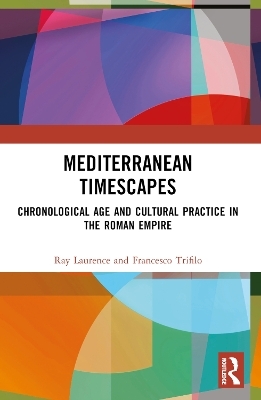
Mediterranean Timescapes
Routledge (Verlag)
978-1-032-47886-9 (ISBN)
This book, built around the study of the representation of age and identity in 23,000 Latin funerary epitaphs from the Western Mediterranean in the Roman era, sets out how the use of age in inscriptions, and in turn, time, varied across this region.
Discrepancies between the use of time to represent identity in death allow readers to begin to understand the differences between the cultures of Roman Italy and contemporary societies in North Africa, Spain and southern Gaul. The analysis focuses on the timescapes of cemeteries, a key urban phenomenon, in relation to other markers of time, including the Roman invention of the birthday, the revering of the dead at the Parentalia and the topoi of life’s stages. In doing so, the book contributes to our understanding of gender, the city, the family, the role of the military, freed slaves and cultural changes during this period. The concept of the timescape is seen to have varied geographically across the Mediterranean, bringing into question claims of cultural unity for the Western Mediterranean as a region.
Mediterranean Timescapes is of interest to students and scholars of Roman history and archaeology, particularly that of the Western Mediterranean, and ancient social history.
Ray Laurence is Professor of Ancient History at Macquarie University (Australia). Prior to this, he was Professor of Roman History and Archaeology at the University of Kent (UK), which came after time at the Universities of Birmingham and Reading. His numerous books focus on ageing, Roman urbanism and Roman roads. He is the editor of the Routledge series Studies in Roman Space and Urbanism. Francesco Trifilò gained his PhD in Ancient History and Archaeology at Birkbeck College, University of London, (UK) before becoming a postdoctoral research fellow first at the University of Birmingham and then at the University of Kent. Subsequently, he pivoted into a career in financial services.
1. Introduction: The Commemoration of Age-at-Death; PART I Age-at-Death in Epitaphs – Issues and Possibilities; 2. 'Demography' and the Measurement of Time in Epitaphs; 3. Understanding the Use of Chronological Age: From the Life Course to Timescapes; 4. Inscribing Age-at-Death as a Cultural Practice; 5. Birthdays, Numbers and Centenarians; PART II Age and Society; 6. Towards a Geography of Age and Gender in the Western Mediterranean; 7. The Family, Age and the Commemoration of the Dead; 8. Freed Slaves across the Mediterranean: Commemorating the Dead; 9. Cities and Soldiers: The Use of Age in the Cemeteries of Roman Africa; PART III Mediterranean Timescapes; 10. The Roman Armed Forces as an Epigraphic Institution; 11. Age and Culture in Numidia: Establishing Localized Timescapes; 12. Explaining Variation in the Use of Chronological Age across the Western Mediterranean; 13. Timescapes of Life and Death in the Western Mediterranean; 14. Afterword – the Archaeology of Latin Epitaphs in the Western Mediterranean
| Erscheinungsdatum | 06.09.2023 |
|---|---|
| Zusatzinfo | 15 Tables, black and white; 76 Line drawings, black and white; 3 Halftones, color; 27 Halftones, black and white; 3 Illustrations, color; 103 Illustrations, black and white |
| Verlagsort | London |
| Sprache | englisch |
| Maße | 156 x 234 mm |
| Gewicht | 453 g |
| Themenwelt | Geschichte ► Allgemeine Geschichte ► Vor- und Frühgeschichte |
| Geisteswissenschaften ► Geschichte ► Hilfswissenschaften | |
| Sozialwissenschaften ► Kommunikation / Medien ► Kommunikationswissenschaft | |
| ISBN-10 | 1-032-47886-1 / 1032478861 |
| ISBN-13 | 978-1-032-47886-9 / 9781032478869 |
| Zustand | Neuware |
| Informationen gemäß Produktsicherheitsverordnung (GPSR) | |
| Haben Sie eine Frage zum Produkt? |
aus dem Bereich


